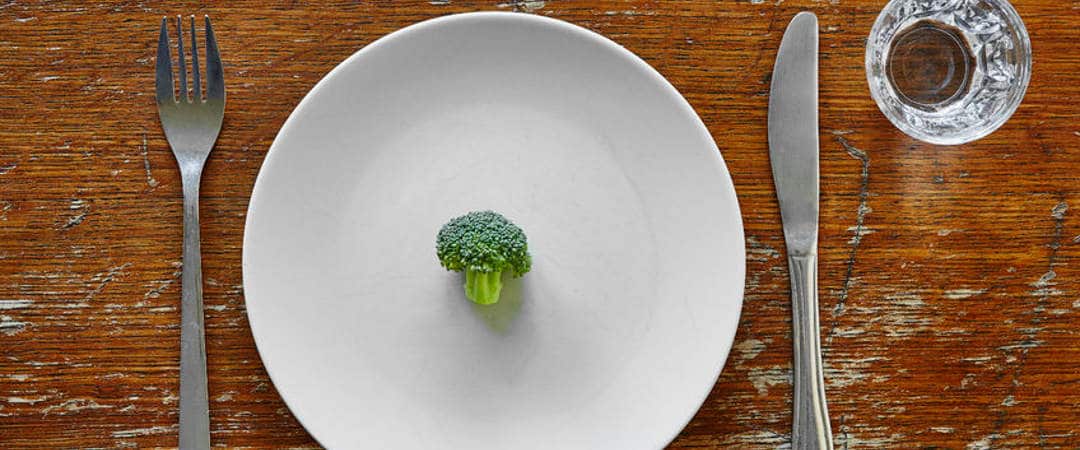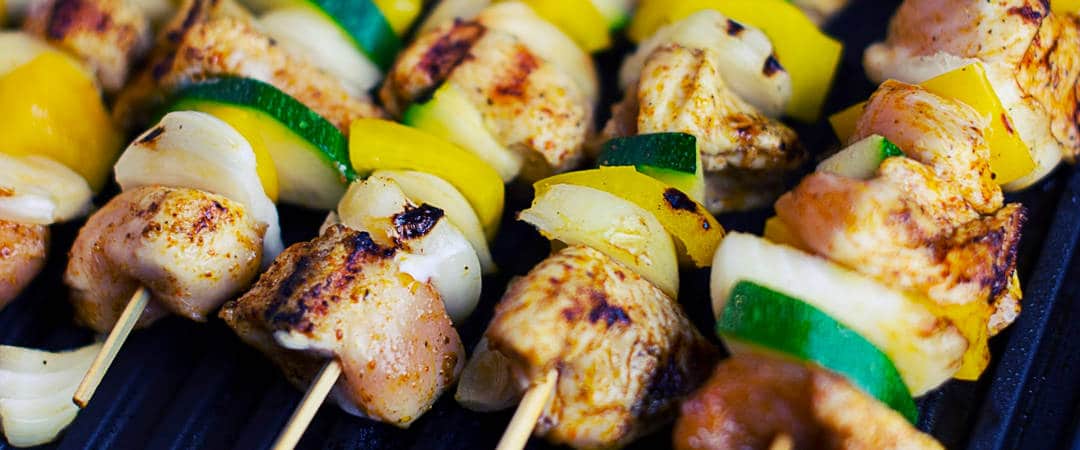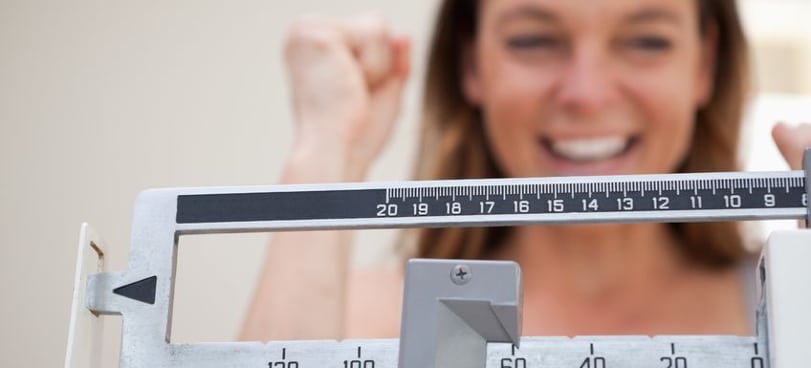How to Lose 20 Pounds in 2 Months
Have a beach weekend, reunion or wedding coming up in about eight weeks? Dreaming of walking out as your slimmer, stronger self? Here’s how to lose 20 pounds in 2 months the healthy way!
Embarking to lose 20 pounds in 2 months takes dedication and hard work, but it is possible. In this article we’ll talk about the math of weight loss, and give you some specific tips about diet, exercise and lifestyle for weight loss. You’ll also find a sample diet and exercise plan to lose 20 pounds in 2 months.
Use the Table of Contents below to jump to a specific section, or simply scroll down to start from the top!
Table of Contents
Healthy Weight Loss
Lots of times we hear people wondering how to lose 20 pounds in a month, or even how to lose 20 pounds in 2 weeks. It’s natural to want to shed pounds as quickly as possible, but research has repeatedly shown that losing at a more moderate pace is healthier. A more realistic goal, such as aiming to lose 20 pounds in 2 months, is both more realistic in the short-run and more maintainable long-term. Studies show that individuals who lost weight at a moderate, healthy pace tend to keep the weight off with much more success than those who lose rapidly and dramatically. So, instead of condemning yourself to the eternal yo-yoing of crash diets and subsequent weight gain, make small changes to lose weight slowly and consistently!
How Much Weight Can You Lose in a Month?
According to experts, the maximum rate of weight loss should be around 2 pounds per week. This translates to a consistent loss of 8-10 pounds a month. So, a goal to lose 20 pounds in 2 months fits these standards as realistic and healthy, albeit ambitious.
Losing weight faster than this 2-pounds-per-week threshold often translates into losing muscle mass, slowing metabolism and an increased risk of other health problems (like gallstones and nutritional deficiencies). Since neither lower muscle mass or a slowed metabolism goes anywhere good in the long run, avoid this tempting trap and skip the crash diets. Curious why rapid weight loss causes all of these not-so-great effects? Keep reading!

What Happens When You Eat Too Little?
You may know the difference between starving due to food shortages and dieting, but your body doesn’t! When you severely restrict calories, your body enters starvation mode. You may be trying to lose a few pounds on purpose, but our bodies defend their fat stores in the same they did hundreds of years ago when our ancestors were eating less because of food shortages. So, how does your body work to keep this weight on?
Slowed Metabolism
First, it slows metabolism. When your body isn’t getting enough fuel for days at a time, it slows down its base level of calorie burn to a minimum. This means, even at rest, you’ll burn less calories when you’re giving your body far too few calories. Since resting energy expenditure (REE) accounts for anywhere from 60-80% of daily calories burn, slowing down this calorie expenditure can majorly affect weight loss.
Making sure you eat enough daily calories and meet your macronutrient (carbs, protein, fat) needs helps keep your metabolism on track.
Decrease in Muscle Mass
Another downside of dramatically cutting calories is a decrease in muscle mass. Our bodies’ favorite source of energy is glucose – a sugar. We primarily derive glucose from carbohydrate-rich foods like grains, fruit and starchy vegetables. So, when we severely limit calories (or even carbs, as is commonly done with diets such as Keto or Atkins), your body doesn’t have the fuel it likes. What does it do to keep on surviving? It switches to protein as a quick energy source (fat takes longer to go into circulation, so it acts as a more slow-acting fuel).
Burning protein for energy is fine when it happens occasionally, but it gets dangerous if you’re constantly forcing your body to use this reserve energy store. Why? We use protein to repair our muscles after they endure everyday wear-and-tear, as well as after tough workouts. This constant cycle of destruction and repair is how we build muscle mass. However, when you use your protein for energy it’s not available for muscle repair and so your muscles can’t recuperate like they’re supposed to. This is detrimental for a couple different reasons. Most notably, REE is lower if you have lower muscle mass, so – again – this result of eating too few calories slows overall weight loss. Also, your heart is a muscle. It’s gets really dangerous when this vital organ can’t repair itself.
One way to minimize this unwanted effect is to make sure you are eating plenty of protein each day.
Risk of Gallstones
Losing weight too fast, or yo-yo dieting (losing and gaining repeatedly), increases your risk of gallstones. In the absence of sufficient glucose over time, your body turns to fat as its everyday, stable energy source. Burning fat is the whole goal of weight loss, but – like most things – when you take it too far, it turns risky. Why?
When the body doesn’t have enough glucose, the liver and fatty tissues release extra cholesterol to compensate. This is good for your weight loss goals because it means fatty stores are shrinking, but not so good for your gallbladder. Gallstones are solid clumps that form from cholesterol and bilirubin in the gallbladder. So, when circulating cholesterol levels are higher, so too is your risk of developing gallstones. While usually not life-threatening (or even symptomatic), untreated gallstones can cause serious health issues.
Following a low-fat diet and losing weight healthfully can help mitigate the risk of developing gallstones.
Other Health Problems
Losing weight too quickly can also prompt the development of several other health problems. These include conditions like nutritional deficiencies, constipation, diarrhea, headaches, hair loss, fatigue and irritability. Save yourself the trouble and make sure you’re eating enough calories to fuel your body.
How Many Calories Should I Eat a Day?
To avoid all of these effects, take care to eat at least 1200 calories a day if you’re woman, or at least 1500 calories a day if you’re a man. For most people, this is the minimum number of calories your body needs to avoid triggering a starvation response. If your starting weight is high or you do a lot of exercise, your minimum daily needs are probably higher. Depending on your age, size, lean muscle mass and regular diet, this minimum calorie limit may dictate how much weight you can lose in a month.
How to lose 20 pounds in 2 Months
Okay, now that we’ve covered why you shouldn’t try to lose 20 pounds in 2 weeks or anything crazy like that, let’s talk about what you’re here for: how to lose 20 pounds in 2 months!
Every healthy weight loss plan includes three main features: diet, exercise and lifestyle. Here we’ll talk about all of those and how to lose 20 pounds fast. Plus, scroll down to find sample diet and exercise plans to lose 20 pounds in 2 months!

The Math of How to Lose 20 Pounds in 2 Months
At its most basic, weight loss is about calculations. If you eat more calories than you burn, you’ll gain weight. If you burn more calories than you eat, you’ll lose weight. A slew of factors exist that influence whether this equation holds exactly true, but the general rule proves irrefutable. So, experts, weight loss apps and health-conscious people around the world all rely on this paradigm to make weight loss predictions. Here’s how this works if you want to lose 20 pounds in 2 months.
The energy contained in one pound of fat is equivalent to 3500 calories (kcals). So, to lose one pound of fat per week you would need to create an energy deficit of 3500 calories over the course of the week. This equates to either eating 500 less per day, or exercising more to burn 500 calories per day, or – as is most commonly done – combining diet and exercise to create that deficit. If you want to lose 2 pounds per week, you would need to double that deficit and cut or burn 1000 an extra 1000 calories per day.
So, to lose 20 pounds in 2 months, you need to create a daily energy deficit of 1000-1250 calories each day. This translates to a predicted loss of 2-2.5 pounds per week due to a calorie difference of 7000-8750 calories per week. If you have relatively low energy needs (e.g. you’re a smaller woman) and you’re already conscientious about what you eat and relatively active, aiming to lose 20 pounds in 2 months will prove challenging (and potentially unhealthy – see above). However, for most of us it’s definitely achievable! If your needs are higher (e.g. you’re athletic or you’re bigger), currently eat a relatively-high calorie diet, or not a big exerciser, this proves a much more realistic goal. Still, be ready to work hard and commit to this weight loss journey!
Diet to Lose 20 Pounds
It’s true that diet is the most important part of weight loss. Recall earlier when I mentioned that 60-80% of daily calorie burn is attributable to resting energy expenditure? Well, that means that exercise plays a relatively small role in achieving weight loss results. That also means that diet is the main way you’re going to achieve weight loss results. Here’s 5 tips to cut calories in your everyday meals:
Choose Water
Do you remember when Adele revealed that she lost tons of weight just by cutting her daily habit of sugary tea? It seemed kind of amazing, but it’s actually highly believable. The average soda, sport drink or light beer has 100-150 calories per serving. Unfortunately, drinks don’t squash our hunger in the same way as a turkey sandwich or an apple and peanut butter. So, we usually wind up eating something with that drink. End result: you just ate and drank a snack – double the calories. Instead, opt for water or unsweetened tea to quench your thirst. These calorie-free options will keep you hydrated without adding inches to your waistline.

Go for Grilled
If you have the option, pick grilled or broiled instead of fried or sautéed. Choosing a healthier preparation of your favorite food can save hundreds of calories. For example, one roasted chicken breast (without skin) has 142 calories, while one breaded & fried chicken breast has 294 calories. That’s more than double the calories in the fried version! Lots of foods follow the same pattern, so swapping out your favorite fried foods for grilled/baked versions of the same meats or veggies can really make a difference in your weight loss.
Serve Sauces on the Side
Sauces are calorie bombs. Small behaviors like dumping dressing on your salad, smothering your burrito in salsa, or coating your pasta in Alfredo pack on the calories. Instead of pouring sauce on top of the whole dish, make (or ask for) your food and sauces separate. If you’re in control of how much sauce goes on the food, you can give the dish flavor without adding all the extra calories.
Choosing a healthy sauce also makes a big difference. Check out this table for a comparison of some popular sauces – good and bad. Check out how many high-calorie versus low-calorie sauces you use. If you use a lot of the high-calorie toppers, try substituting a lower-calorie option!
| BASE DISH | High-Calorie Sauce | Lower-Calorie Sauce |
| Green Salad | Caesar Dressing | Italian Dressing |
| Cole Slaw | Creamy Sauce/Mayo | Vinegar |
| Tortilla Chips | Queso | Salsa |
| Mashed Potatoes | Brown Gravy | Garlic & Pepper |
| Spaghetti | Alfredo & Pesto | Marinara |
| Enchiladas | Enchilada Sauce | Salsa |
Through choosing a lower-calorie, lower-fat sauce you can still enjoy your favorite foods without overdoing your daily calorie budget!
Plan to Snack
Have you seen the viral meme about eating egg whites and kale all day, and then bingeing on Oreos and ice cream all night? The creator was poking fun at dieters, but it rang all too true with anyone who’s ever tried to pull off an overnight diet makeover. You get to the end of the day (or maybe only even 3pm) and all you can think about that package of Oreos in the pantry.
This happens because your body wants more fuel, and when you’re following an overly-strict diet, you’re not giving your body the energy it needs. Instead of falling into this trap, plan to snack throughout the day. If your schedule allows for it, aim to have a small, nutritious snack at least 2-3 times per day. Three healthy meals + 2 healthy snacks is the ideal plan for a lot of people. Check out the sample diet plan below for some inspiration!
Track Your Intake
Last but definitely not least, track your food! I know it’s tedious, and nobody really likes writing down every little morsel that goes into their mouth… but studies consistently prove this technique’s effectiveness in producing lasting weight loss. If you have to write down what’s on your plate, you’re much less likely to eat impulsively or consume foods/drinks that you don’t want in your food journal. You can either keep an old-school, pen & paper journal (and then look-up calories at the end of the day), or use a tracking app like MyFitnessPal or Lose It. These apps are free and easy to use, so they make tracking a breeze if you have a smartphone.
Exercise to Lose 20 Pounds
As we talked about earlier, most of your daily calories are burned as part of your resting energy expenditure (REE) – the fuel you burn to live and carry-out basic functions like breathing and digestion. However, there’s still about 20% of daily calorie expenditure that’s variable and dependent on everyday choices. About half of this changes with daily activity or exercise. That means only about 10% of your daily calorie use is directly affected by exercise. Still, working out more and building lean muscle mass increases resting metabolic rate (RMR), which boosts the calories you burn at rest. Want to lose 20 pounds in 2 months and keep it off? Boosting and maintaining a higher RMR will do wonders.
The best workout plans include four types of activity. You should aim to develop higher levels of fitness in: endurance (cardio/aerobic), strength training, flexibility and balance. Vary your workouts and aim to includes something from each category every week.
Endurance Exercises
Endurance exercises are also called cardio or aerobic exercises. These are activities that raise your heart rate and make you breathe harder. By increasing circulation, they help protect your heart and lungs against chronic disease. This is also the BEST type of exercise for weight loss. High-intensity cardio (like running, interval training or climbing) raise your heart rate the highest and burn the most calories per minute. One the other hand, lower intensity cardio (like walking, biking or recreational swimming) burns the most fat per calorie. That’s because this latter category of activities quickens your heart rate into a lower, but still elevated, fat-burning zone that allows your body to burn a higher percentage of fat. Either way, cardio will help you lose 20 pounds in 2 months if that’s your goal.
Current recommendations suggest 150 minutes of moderate (lower intensity) aerobic activity per week, or 75 minutes of vigorous (high intensity) aerobic activity each week. As an example: that translates into a 30-minute walk 5x per week, or three 25-minute runs. Or mix and match! Just get your cardio in.
Strength Training Exercises
Just because cardio is so great doesn’t mean that other types of exercise aren’t important too. Strength training (also called resistance training) is critical for increasing power, preventing injury and boosting metabolism. Even though you won’t burn as many calories per minute building strength, the more muscle you have the higher your RMR. That means more time lifting weights and doing crunches translates into burning more calories while you sit on the couch. Lots of people see the calorie-per-minute comparisons and skip strength training when they want to lose weight, but any well-planned weight loss program should include both aerobic and strength training exercises.
Some common examples of strength training include: lifting weights, using resistance bands or doing body weight exercises (like push-ups, pull-ups, plank and crunches). Experts recommend incorporating strength training sessions at least 2-3 times per week.
Flexibility Exercises
Flexibility exercises help keep you limber to prevent injury. This is another category that suffers among people hoping to lose weight since your heart rate and calorie burn both stay lower. This is a mistake. Taking time to stretch and promote flexibility reduces the likelihood that you’ll get sidelined from cardio or strength sessions. It also reduces post-workout pain. So take a 10-15 minutes after each workout to recover and stretch. If you’re feeling extra motivated, think about including a yoga session or two in your weekly workout routine!
Balance Exercises
Balance exercises are the final category. Improved balance is correlated with better health outcomes at any age, but especially in older adults. If you think your balance could use some work, join a Tai Chi class or practice some at-home yoga to improve your stability.
Lifestyle Tips to Lose 20 Pounds in 2 Months
Diet and exercise are paramount in your journey to lose 20 pounds in 2 months, but lifestyle is important too. Take time to care for yourself throughout the day – not just at mealtime or in the gym.
Studies show that people who sleep less than 7 hours per night gain more weight than those that sleep 7-9 hours per night. Focus on getting your nightly ZZZs to make weight loss easier.
Also learning stress management techniques so that you can reduce daily and chronic stress will help you lose weight faster. Stress increases levels of the hormone cortisol, which encourages the storage of fat. So, since you’re interested in losing fat, it may prove beneficial to practice stress-management through activities like meditation, journaling or listening to music.
Friends and family also make a big difference in the success of your weight loss journey – especially in terms of keeping the weight off. If you can find a workout buddy, get your partner on-board with your weight loss or find a group of friends that supports your healthy lifestyle, research shows that you’ll be more successful in keeping the weight off.
Can You Lose 20 Pounds in 2 Months?
Yes, it is possible to lose 20 pounds in 2 months if you remain committed to a strict diet, exercise and lifestyle plan.
To lose 20 pounds in 2 months, you should aim for an average weight loss of about two pounds per week (or a little more). This is achievable through creating an energy deficit of 1000 calories per day, either by eating less or moving more. The trick is not triggering starvation mode in your body! So, it’s important that take care to consume at least 1200 calories per day (or 1500 calories if you’re a man).
The healthiest way to attain this calorie deficit is to incorporate regular exercise into your routine. A combination of cardio, strength training and stretching is best for accomplishing weight loss.
Reducing stress and getting enough sleep will also help you reach this goal.
Any suggestions or questions about how to lose 20 pounds in 2 months? Share your thoughts with us in the comments section below!








Great information, Im trying to lose some lbs for the upcoming wedding of my best friend! HOpe it works 🙂
Hi Jane! We’re happy to hear that you enjoyed the article 🙂
@Sarah: Got some good Ideas from the Article. Thx. Would be cool to have a cal calculator in the site…
Hi Sam!! Great idea 😀 We’re actually working on building a calculator section – check back soon!
Thank you for the article, is there any way we can’t get a diet guide or food menu to follow?